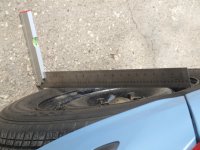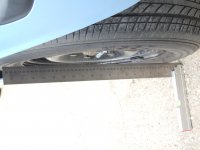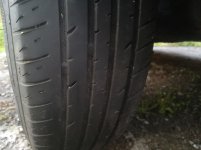As with all front wheel drive cars, I've always jacked up the front using a block of wood under the lowest point of the bell housing.
Sorry Yolanda, I've no doubt you've been successfully doing this for years? but I'd be very VERY nervous about doing this because you are in effect hanging the entire weight of the front of the body on the engine mounts - they were never designed to do this.
Personally I go for box sections or strong parts of suspension or subframes. On the Panda there is a very convenient box section both front and rear:
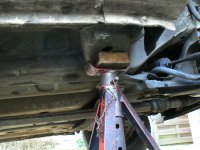
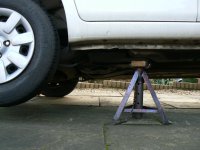

Whilst you can jack up on these safely it then leaves you with the problem of where to put axle stands if you are doing more than just changing a wheel because these points also make excellent places to put the axle stands. You can jack it on the rear axle just behind the chassis mounts where it's very strong and similarly at the front on the subframe where it bolts to the body, like where this axle stand is positioned:
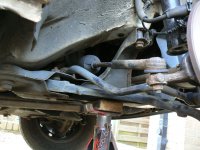
but it can be a bit of a phaf and the jack can slip if you're not careful. It does let you use the box sections for the axle stands though.
What I like to do is make up a dedicated fitment for my jack which bridges the sill seam and is big enough to spread the load so, unless severely corroded, no damage will be done to the sill:
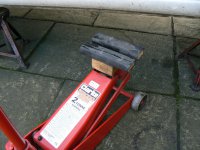

I've done this for every car I've owned for many years now and never had a problem with jacking them up this way. You can jack the whole side in one go by putting the jack about one third of the way down the side of the car from the front - front being much heavier with the engine etc - and in no time at all you've got the stands in and ready to go to work.
Personally, I'd never even think about jacking up in the centre of a rear axle beam. You might get away with it but if you don't? well, you'd better have deep pockets!
PS It was always a great temptation to jack up the old British Leyland stuff - Mini, 1100, Maxi, etc etc on the bottom of the lovely flat sump but if you did it almost guaranteed the engine mounts would delaminate/separate and oh boy was that guaranteed to upset the foreman!


